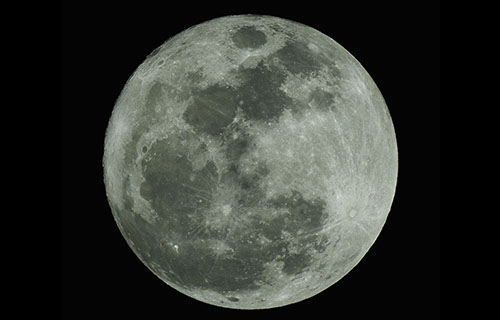Though data from orbiters have suggested presence of water ice, the exploration of ירחי craters in the polar regions of moon has not been possible due to the absence of suitable technology to power ירחי rovers in the perpetually dark, super cold areas having a temperature of –240°C. The project PHILIP (‘Powering rovers by High Intensity Laser Induction on כוכבי לכת’) commissioned by European מֶרחָב Agency is ready to develop prototypes that would provide laser power to these rovers in an effort to explore evidence of existence of water in these craters.
ירח אינו מסתובב על צירו כשהוא מסתובב סביב כדור הארץ ולכן הצד השני של הירח לעולם אינו נראה מכדור הארץ אך שני הצדדים מקבלים שבועיים של אור שמש ואחריהם שבועיים של לילה.
However, there are sunken areas in craters situated in the polar regions of moon that never receive sun-light because low angle of sunlight that leave the deep interiors of the craters in shadow forever. This perpetual darkness in the polar craters make them super cold in the range of –240°C corresponding roughly to about 30 Kelvin i.e. 30 degrees above absolute zero. The data received from the ירחי orbiters of ESA, ISRO ו נאס"א have shown that these permanently shadowed areas are rich in hydrogen, suggestive of presence of מַיִם (ice) in these craters. This information is of interest for science as well as a local source of ‘water and oxygen’ for future moon human habitation. Therefore, there is a need of a rover that could go down to such craters, drill and bring sample for testing to confirm presence of ice there. Given ירחי rovers are usually solar powered, this has not been achieved so far because it has not been possible to ensure power supply to rovers while it explores some of these dark craters.
שיקול אחד היה להחזיק רוברים המונעים על ידי גרעיני, אך זה נמצא כלא מתאים לחקר קרח.
הפרויקט לוקח רמז מהדיווחים על שימוש בלייזר כדי להפעיל מל"טים כדי לשמור אותם למעלה למשך זמן ארוך יותר פיליפ (‘Powering rovers by High Intensity Laser Induction on כוכבי לכת’) was commissioned by European מֶרחָב Agency to design a complete מופעל בלייזר משימת חקר.
The PHILIP project is completed now and the ESA is one step closer to powering ירחי rovers with lasers to explore the super cold dark מכתשי ירח ליד הקטבים.
ESA תתחיל כעת לפתח אבות טיפוס לחקר המכתשים האפלים שיספקו ראיות לאישור נוכחותם של מים (קרח) שיובילו להגשמת החלום האנושי לאכלס לוויין זה.
***
מקורות:
סוכנות החלל האירופית 2020. אפשר ותמיכה / הנדסת חלל וטכנולוגיה. רובר מופעל בלייזר כדי לחקור את הצללים האפלים של הירח. פורסם ב-14 במאי 2020. זמין באינטרנט ב http://www.esa.int/Enabling_Support/Space_Engineering_Technology/Laser-powered_rover_to_explore_Moon_s_dark_shadows נגיש ב-15 במאי 2020.
***






































